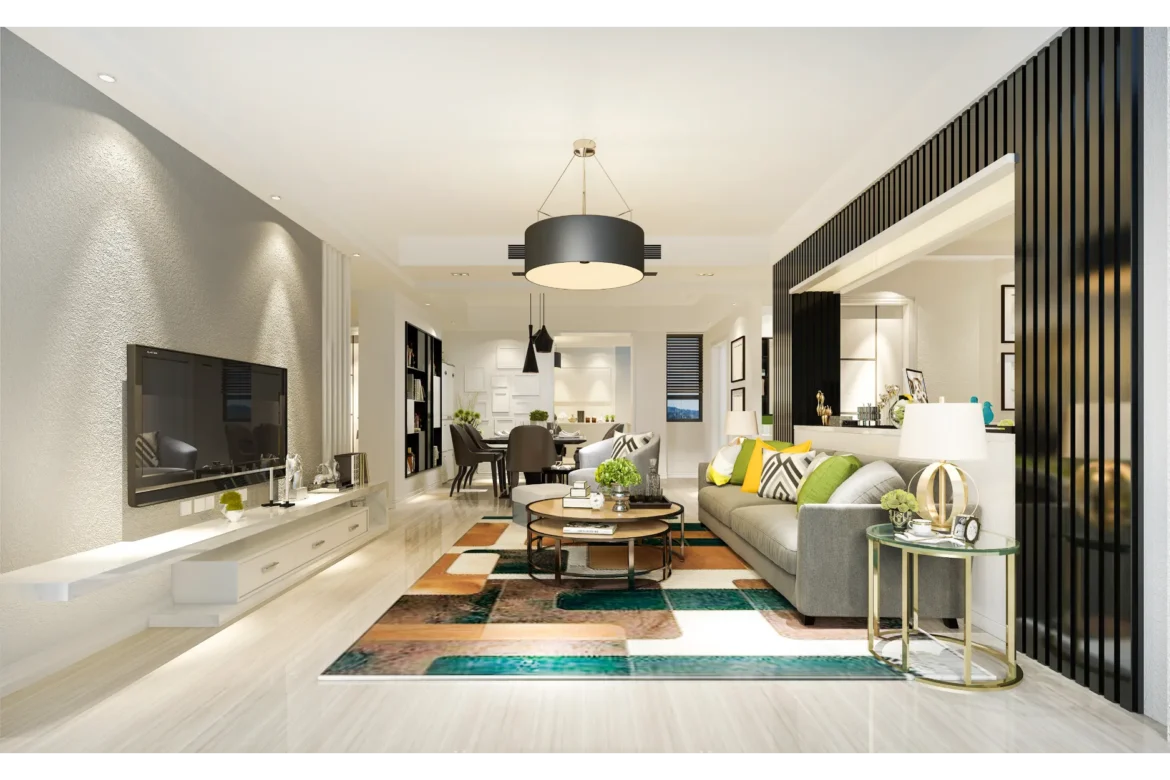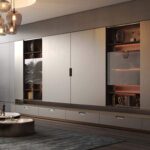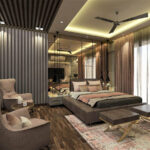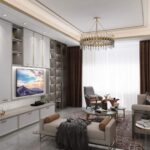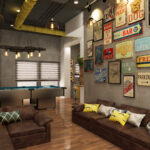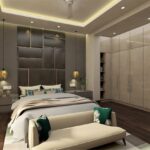8 Super Specialized Lighting Techniques For Interior Design Bliss
Overview
Discover the transformative power of specialized lighting techniques in interior design. Illuminate your spaces with innovative ideas.
As the renowned architect Le Corbusier once remarked, “Light creates ambiance and feel of a place, as well as the expression of a structure.” This sentiment encapsulates the essence of the intricate dance between design and illumination, where every ray of light holds the potential to transform a room into a captivating narrative.
In the vast canvas of interior design, lighting is the brushstroke that makes every detail and nuance visible. It is the orchestrator that directs attention, enhances textures, and sets the mood. The strategic use of light in interior design goes beyond mere functionality; it is the key to unlocking the full potential of a space. For example, a room adorned with carefully placed downlighting achieves a spacious and inviting ambiance, while simultaneously accentuating the architectural features.
The interplay of light and shadow takes on an artful dimension through specialized lighting effects. Each technique becomes a unique design expression, transforming traditional lighting into an immersive experience. Picture the subtlety of moonlighting in outdoor settings, where fixtures simulate the serene glow of a moonlit night, elevating the ambiance of a garden into a realm of enchantment.
In the pursuit of interior design excellence, the integration of specialized lighting effects emerges as a distinguishing factor. Beyond the visual appeal, these effects become integral to crafting unique atmospheres that resonate with the emotions of inhabitants. Whether it’s the spotlighting in a restaurant, turning each dish into a visual masterpiece, or the nuanced use of downlighting to create a cozy atmosphere, specialized lighting effects offer designers the tools to infuse personality into every project.
Scallop Lighting
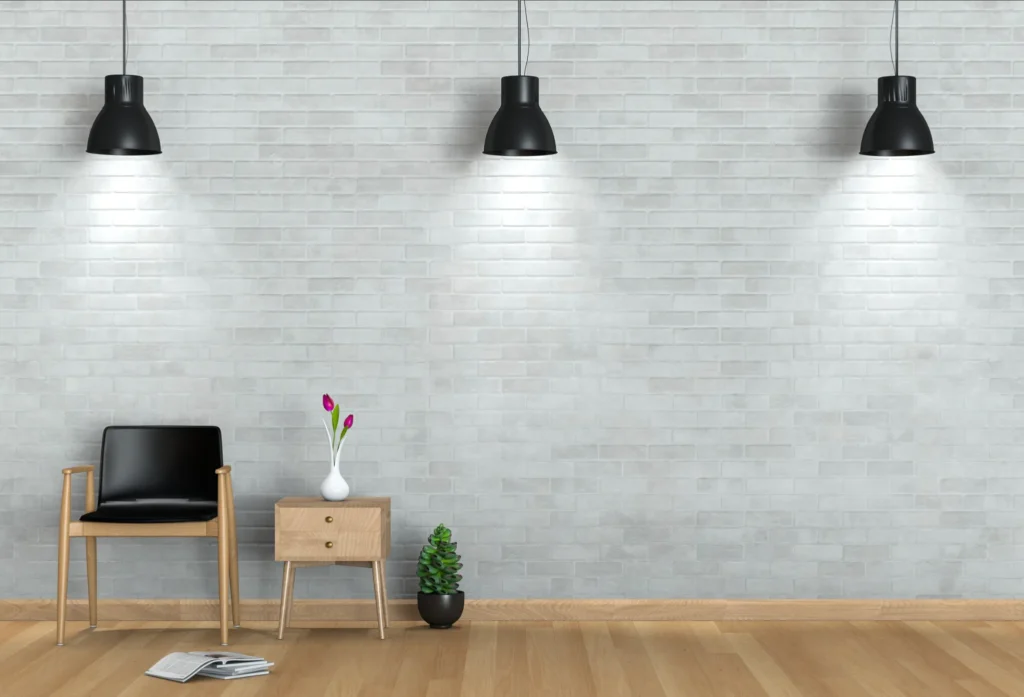
Definition And Concept
Scallop lighting is an interior design technique that harnesses the beauty of light to create gracefully scalloped patterns on surfaces. Imagine the soft, undulating glow reminiscent of gentle waves, casting intricate shadows that dance and play across walls and ceilings. This technique is achieved by strategically placing light fixtures to generate these distinctive patterns, transforming a space into a haven of refined elegance.
In a modern living room, scallop lighting can be used to emulate the effect of dappled sunlight streaming through tree branches, creating a calming and natural ambiance. At its core, the concept of scallop lighting draws inspiration from nature’s play of light and shadow. By carefully positioning lights to create repetitive, curved patterns, designers mimic the aesthetic appeal found in natural settings. This technique is not just about illumination; it’s about infusing spaces with a sense of rhythm and harmony, elevating the overall aesthetic experience.
Applications of Lighting Techniques
Enhancing Specific Areas with Scallop Lighting: Scallop lighting excels in enhancing specific areas within a room, turning them into focal points. Whether applied to alcoves, niches, or accent walls, this technique draws attention to architectural details and creates zones of interest. In the realm of interior design, it functions as a nuanced yet potent method to direct the observer’s focus and meticulously shape a visual odyssey throughout the space. Example: In a boutique hotel lobby, scallop lighting can be strategically placed to draw attention to a unique artwork, transforming it into a captivating centerpiece.
Using Scallop Lighting to Highlight Objects and Create Visual Interest: Beyond accentuating architectural elements, scallop lighting is a masterful tool for highlighting specific objects or decor items. By casting soft shadows around sculptures, vases, or artifacts, it brings them to life, transforming them into art pieces bathed in an ethereal glow. This application is not just about illumination; it’s about storytelling through light. For instance, In a residential interior design, scallop lighting can be employed to showcase a collection of artworks on a feature wall, turning the entire display into a captivating gallery within the home.
Wall Grazing
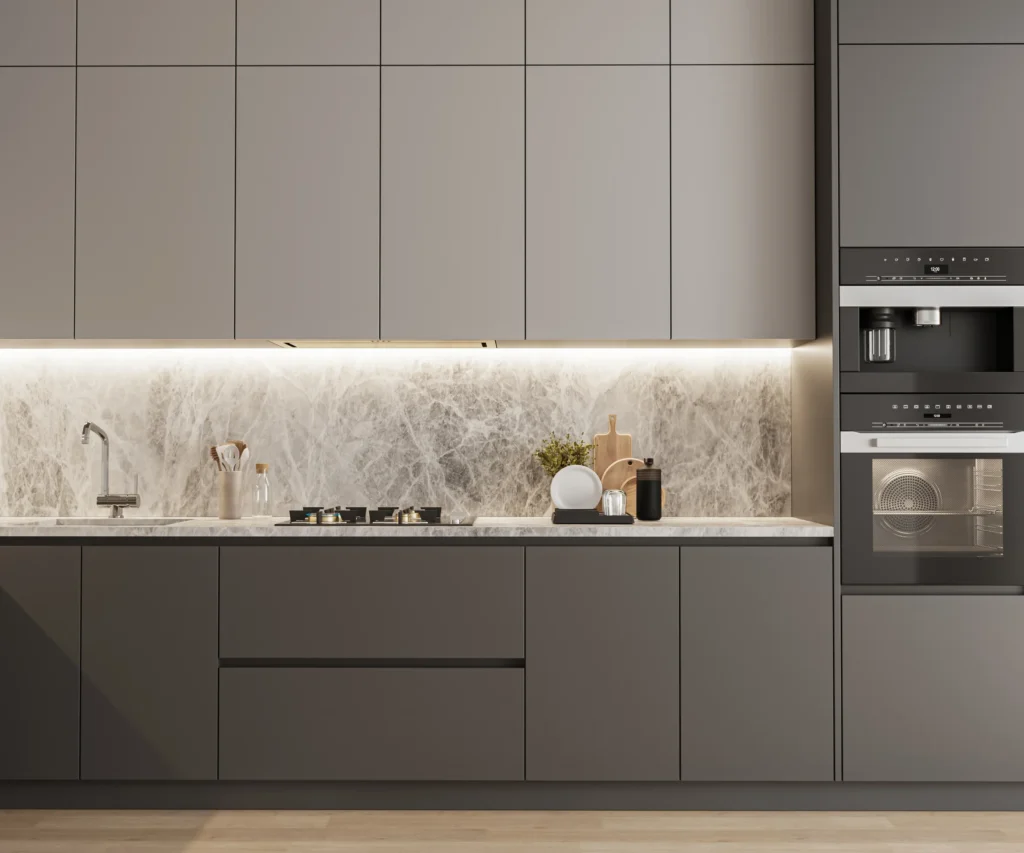
Casting Light Along Vertical Surfaces
Wall grazing is a captivating technique in the world of interior design, where light is strategically cast along vertical surfaces, transforming them into canvases of illumination. This involves placing light fixtures close to walls, allowing the light to skim across the surface. The result is a play of shadows and highlights that adds depth and intrigue to the space. Picture a chic restaurant with exposed brick walls. Wall grazing accentuates the texture of the bricks, creating a visually striking backdrop that enhances the overall dining experience.
The essence of wall grazing lies in its ability to create dynamic visual interest. By skillfully directing light along walls, interior designers produce captivating patterns that engage the eye. This technique adds a layer of sophistication to the environment, making the vertical elements of a room come alive with a subtle yet impactful glow. Example: In a contemporary art gallery, wall grazing can be employed to highlight the unique texture of paintings or sculptures, transforming the exhibition space into a dynamic showcase of visual artistry.
Applications
Highlighting Textures Using Wall Grazing: One of the key applications of wall grazing is its ability to accentuate textures within a space. Whether it’s the grain of wooden panels, the ruggedness of stone surfaces, or the smoothness of a feature wall, this technique brings out the tactile quality of materials. It contributes a tactile dimension, enriching the overall interior design with a heightened sensory experience. In a spa interior design, wall grazing can be applied to highlight the natural texture of a stone accent wall, creating a serene and tactile environment that complements the overall wellness theme.
Enhancing Architectural Features through Strategic Wall Grazing: Wall grazing becomes an interior design ally in the enhancement of architectural features. By precisely illuminating columns, arches, or other distinctive elements, interior designers draw attention to the structural beauty of a space. This application not only adds aesthetic value but also contributes to the overall spatial narrative.
Shadowing
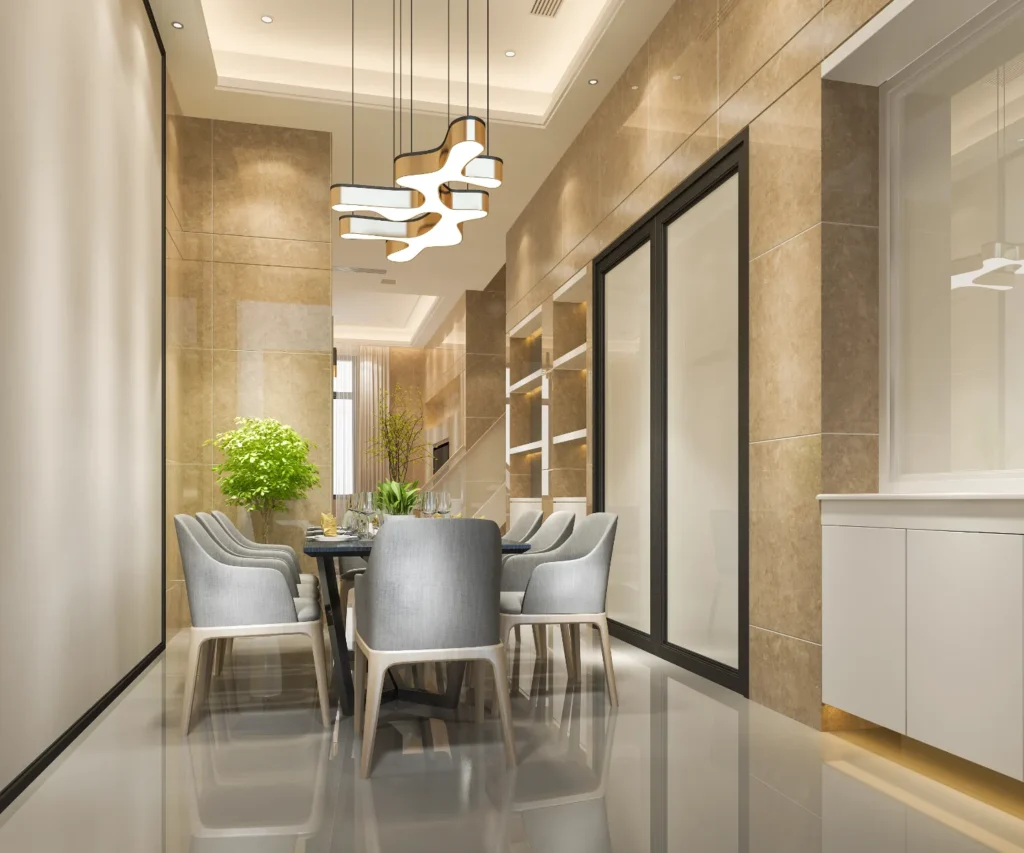
Creating Dynamic Visual Elements
Shadowing is an artful exploration that goes beyond illumination, diving into the creation of dynamic visual elements. It involves strategically placing light sources to cast captivating shadows, turning the ordinary into extraordinary. This technique is about embracing the play between light and darkness, sculpting spaces with the nuanced artistry of shadows. Imagine a cozy reading nook with a pendant light casting shadows of an intricately designed lampshade onto the walls, creating an immersive and visually engaging atmosphere.
Shadows aren’t merely the absence of light; they are design elements in their own right. By manipulating light angles and intensities, designers can generate shadows that add depth, drama, and a sense of movement to a space. This technique is a choreography of light, orchestrating a visual dance that evolves with changing perspectives. In a modern living room, strategically placed track lights can cast elongated shadows of sculptural decor, infusing the space with a sense of contemporary artistry.
Integration Into Interior Design
Adding Aesthetics to Interior Design through Shadowing: Shadowing is a potent tool for infusing aesthetics into interior design. It adds a layer of visual complexity, turning mundane surfaces into canvases of intrigue. Whether it’s the gentle silhouette of furniture or the intricate patterns created by decorative elements, shadowing contributes to a design’s overall aesthetic appeal. Example: In a chic restaurant, pendant lights above each table not only provide illumination but also cast intriguing shadows, contributing to the establishment’s modern and stylish ambiance.
Contemporary interior design thrives on the interplay of light and shadow. Shadowing, when integrated thoughtfully, becomes a defining feature. Consider accentuating a wall with textured panels; strategically placed lighting can cast shadows that highlight the texture, creating a visually dynamic focal point.
Uplighting
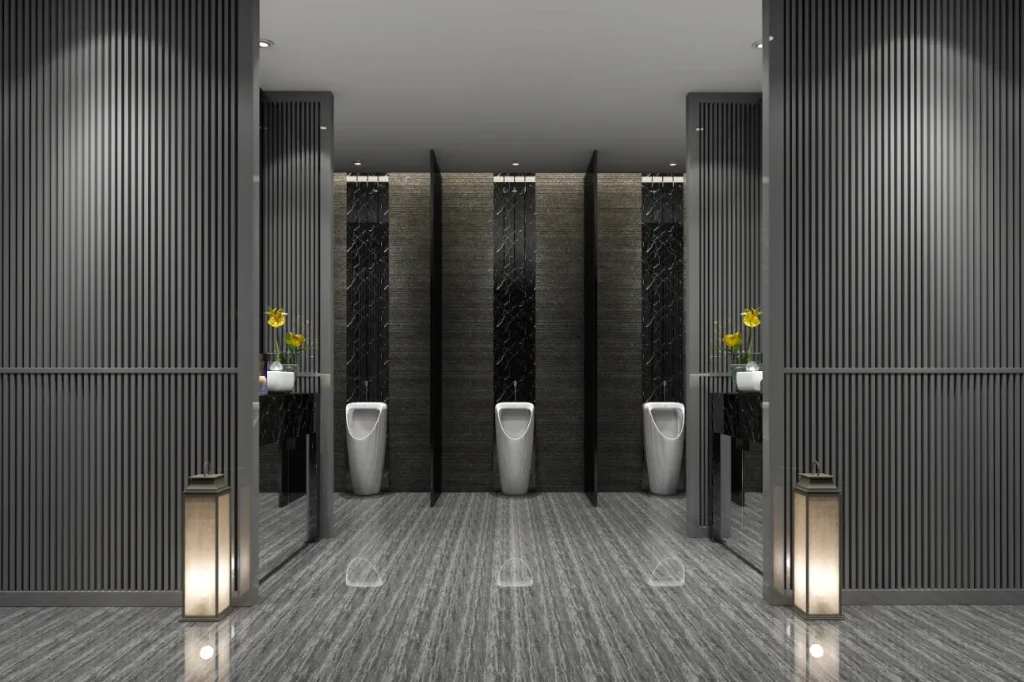
Directing Light Upward
Uplighting, a technique revered in the realm of interior design, involves the strategic direction of light upward. This deliberate placement creates a visually enchanting effect, allowing the light to gracefully ascend and cast its glow on ceilings, walls, and architectural elements. The goal is to draw the eye upward, accentuating the vertical elements of a space. Picture an elegant foyer where strategically placed uplights gracefully illuminate a grand staircase, adding a touch of sophistication to the entryway.
The magic of uplighting unfolds when it highlights key features like majestic trees or architectural columns. By directing light from the ground up, designers showcase these elements with a gentle, upward glow. This technique transforms outdoor landscapes and indoor spaces into visually arresting environments. In a lush garden, uplighting beneath a towering oak tree creates a captivating play of light and shadow on its branches, turning the tree into a mesmerizing focal point.
Dramatic Effects
Creating Dramatic Effects in Outdoor Settings: Uplighting is a maestro in outdoor design, orchestrating dramatic effects that transcend the ordinary. Consider a residential facade where carefully positioned uplights accentuate the architectural details of the home during the evening hours. The result is a dramatic and visually striking curb appeal that transforms the entire ambiance. Example: A contemporary outdoor sculpture can be transformed into a captivating art installation through uplighting, creating an immersive experience for onlookers during nighttime.
Indoor Applications of Uplighting for Ambiance: Uplighting isn’t confined to outdoor spaces; its versatility shines indoors as well. In interior design, uplighting can be used to craft ambiance and evoke specific moods. Imagine a restaurant with concealed uplights along the perimeter, casting a warm glow that enhances the overall dining experience, creating an intimate and inviting atmosphere. In a spa setting, uplighting strategically placed behind potted plants can infuse the space with a tranquil ambiance, contributing to the overall wellness theme.
Downlighting

Simulating Natural Overhead Light
Downlighting emerges as a design strategy aimed at simulating the natural beauty of overhead light. This technique involves positioning light fixtures above, casting a gentle glow downward. The concept is rooted in creating an illusion of spaciousness by mimicking the way natural light fills a room from above, providing a warm and welcoming atmosphere. Example: Visualize a contemporary kitchen where recessed downlights above the countertops emulate the effect of sunlight streaming into the space, enhancing both functionality and visual appeal.
Recessed lighting and pendant fixtures become conduits for downlighting’s charm. Recessed lights discreetly nestled in ceilings and pendant fixtures suspended from above both contribute to the seamless integration of downlighting. This approach not only lights up targeted areas but also introduces an architectural dimension to the overall design. In a dining room, a cluster of pendant fixtures with downward-facing bulbs creates an intimate atmosphere, casting a focused glow on the dining table below.
Practical Applications
Creating a Cozy Atmosphere with Downlighting: Downlighting is a virtuoso in crafting cozy atmospheres within interior design. By gently illuminating from above, it creates a soft and inviting ambiance. In a living room, for instance, strategically placed downlights can transform the space into a snug retreat, ideal for relaxation and intimate gatherings. A bedroom adorned with pendant lights above nightstands provides focused downlighting, contributing to a serene and restful atmosphere conducive to a good night’s sleep.
Downlighting as a Key Element in Interior Design: Downlighting stands as a foundational element in the toolkit of interior designers. Its adaptability empowers it to play a crucial role in influencing the overall visual appeal of a space. In modern office design, for instance, recessed downlights not only ensure even illumination but also contribute to a clean and streamlined look. In a contemporary art gallery, downlighting showcases individual artworks, allowing for a controlled focus on each piece and emphasizing the artistic narrative.
Silhouetting
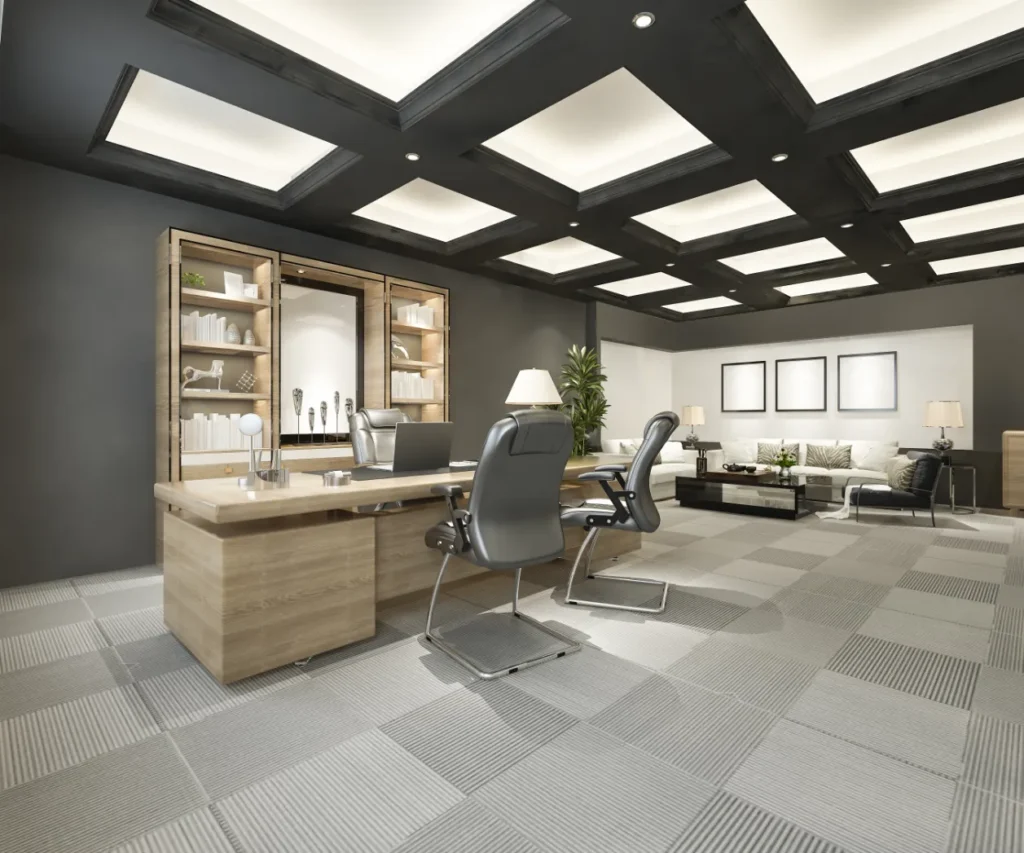
Backlighting For Emphasis
Silhouetting, as an artful technique in interior design, harnesses the power of backlighting to craft captivating dark outlines. By strategically placing light sources behind objects or subjects, the result is a stark contrast between the illuminated background and the foreground, creating distinct and dramatic silhouettes. This method is a play of light and shadow, allowing for the emphasis of shapes through the artistry of darkness. Visualize a living room with strategically placed floor lamps behind a contemporary sofa. The backlighting creates a striking silhouette of the furniture against a well-lit wall, adding an element of visual intrigue to the space.
Silhouetting goes beyond mere illumination; it serves as a storyteller, emphasizing the inherent shapes and elements within a composition. By intentionally darkening the foreground, the viewer’s focus is drawn to the form and contours of objects, creating a visually engaging narrative within a space. In a minimalist workspace, silhouetting can be employed by using pendant lights above a sleek desk. The resulting dark silhouette of the desk against a softly lit backdrop emphasizes its clean lines and modern design.
Showcasing In A Unique Way
Unique Applications of Silhouetting in Design: Silhouetting unfolds as a versatile tool in the interior designer’s arsenal, offering unique applications that elevate interiors. Imagine a statement wall adorned with intricately designed metal art pieces. By backlighting these artworks, the resulting silhouettes transform the wall into a dynamic gallery, adding a touch of uniqueness to the room.
Enhancing Visual Storytelling through Silhouette Techniques: Silhouetting becomes a medium for visual storytelling, where the interplay of light and shadow enhances the overall narrative of a space. Consider a cozy reading corner with a well-placed floor lamp behind a comfortable chair. The resulting silhouette creates an inviting atmosphere, subtly encouraging the storytime ritual. In a restaurant with an industrial theme, silhouetting can be used to highlight exposed brick walls, emphasizing their texture and contributing to the overall narrative of the venue’s design.
Spotlighting
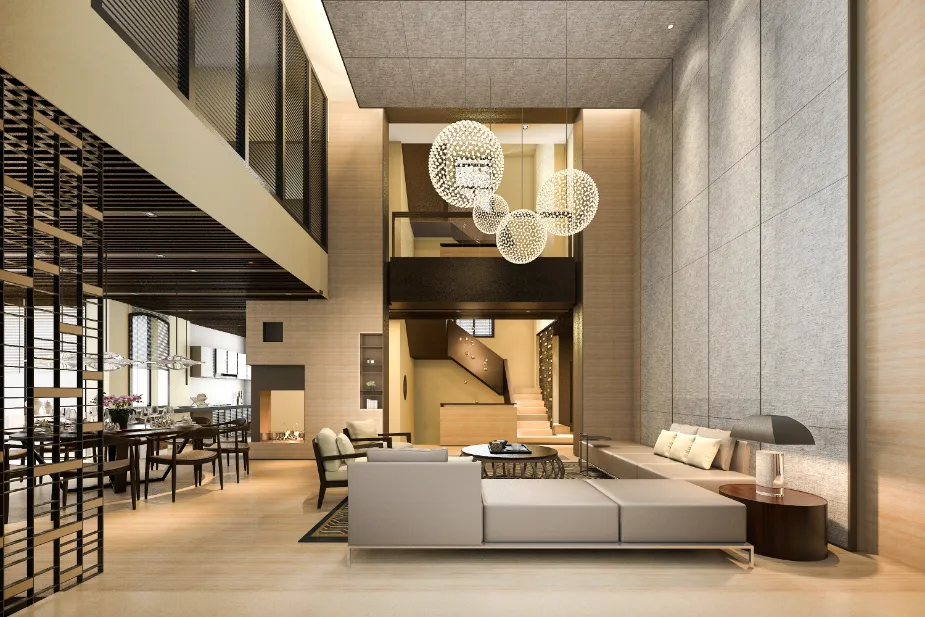
Precision Lighting For Focal Points
Spotlighting, a refined technique in the palette of interior design, involves the meticulous use of focused light to highlight specific elements within a space. Unlike broader lighting methods, spotlighting is characterized by its precision and directness, allowing designers to pinpoint and accentuate key focal points. This technique is an artful dance between light and space, achieving a heightened level of control over illumination.
The beauty of spotlighting lies in its ability to isolate and showcase particular elements, be it artwork, architectural details, or design features. By directing focused beams of light, designers can sculpt the visual hierarchy within a room, guiding the viewer’s gaze toward the intended focal points. In a retail setting, spotlighting can be strategically applied to showcase a premium product display, drawing attention to specific merchandise and creating a sense of exclusivity.
Drawing Attention
Techniques for Drawing Attention through Spotlighting: Drawing attention is at the core of spotlighting’s prowess. This technique employs various methods to guide gazes and elevate the perceived importance of specific elements. Whether through contrast, intensity, or strategic placement, spotlighting becomes a directorial tool in shaping the visual narrative.
Spotlighting finds success across diverse settings, each presenting unique opportunities for drawing attention. In a residential setting, it might be used to showcase a statement piece of furniture, while in a museum, spotlighting might be applied to artifacts, emphasizing their historical significance. In a modern kitchen, track lighting with adjustable spotlights can be utilized to highlight a sleek countertop or a vibrant piece of artwork, enhancing both functionality and aesthetic appeal.
Wall Washing
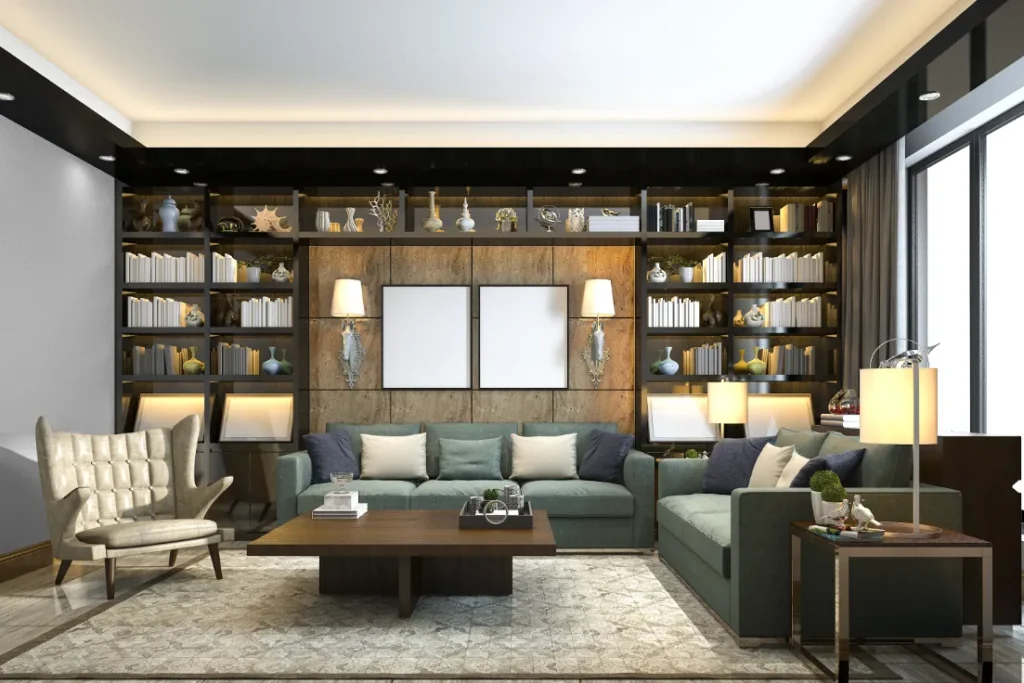
Achieving A Uniform Wash Of Light
Wall washing stands as a technique in interior design where light is skillfully directed to achieve a uniform wash across vertical surfaces. This method involves distributing light evenly, creating a seamless and gentle glow that embraces walls. The aim is to eliminate harsh shadows, allowing the textures and colors of the surfaces to be showcased in their full glory. Imagine a contemporary art gallery where wall washing is applied to highlight an expansive mural. The even illumination ensures that every detail of the artwork is vividly displayed without distracting shadows.
Wall washing finds versatile applications in various settings. In art galleries, it becomes a tool to showcase artworks without the interference of uneven lighting. In living rooms, it contributes to a warm and welcoming atmosphere. Commercial spaces benefit from wall washing to create an inviting ambiance, making products and displays more visually appealing.
Impact On Design
How Wall Washing Contributes to Overall Design Aesthetics: The impact of wall washing on design aesthetics is profound. By achieving an even wash of light, this technique enhances the visual appeal of surfaces and architectural features. In a modern kitchen, for instance, wall washing can be applied to highlight a textured backsplash, adding depth and character to the entire space. In a contemporary office space, wall washing contributes to a clean and minimalistic aesthetic by providing consistent illumination across accent walls, promoting a sense of coherence.
Combining Wall Washing with Other Lighting Techniques for a Harmonious Look: The beauty of wall washing lies in its compatibility with other lighting techniques. When combined with spotlighting, for instance, it can accentuate specific focal points, creating a harmonious blend of general and accent lighting. This combination allows for a layered and visually engaging design.
Conclusion
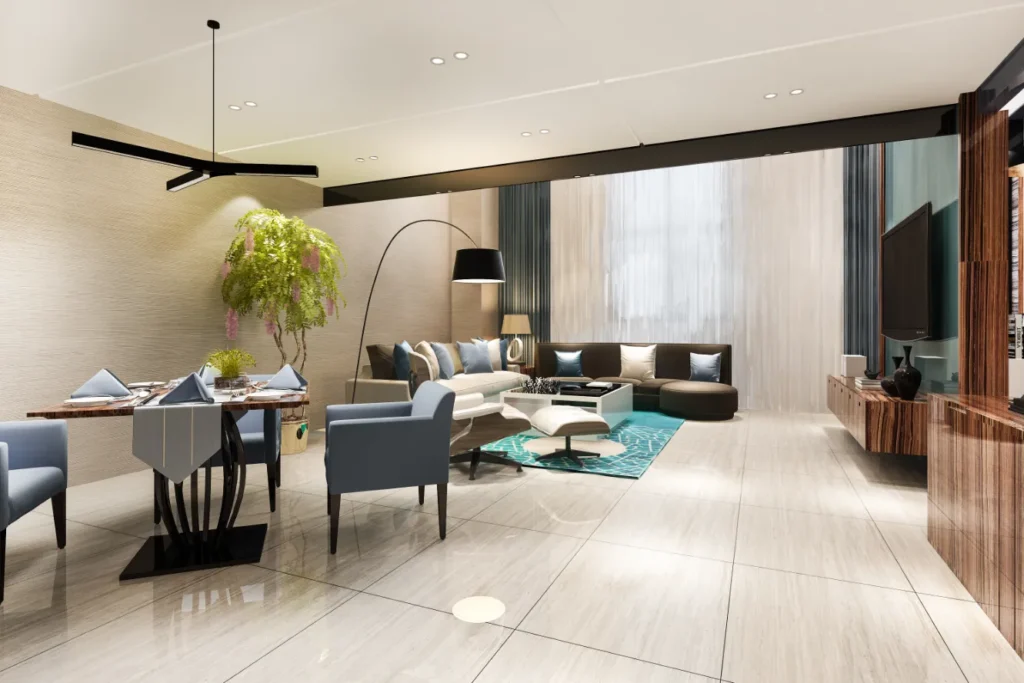
The versatility of these lighting effects, from scallop lighting’s delicate patterns to the dramatic play of shadows, highlights the dynamic nature of design possibilities. Silhouetting emerges as a storyteller, using backlighting to emphasize shapes while uplighting elevates outdoor landscapes and cozy indoor nooks alike. Downlighting, with its simulated natural overhead light, brings forth a spacious feel and a touch of elegance.
Wall washing, achieving a uniform wash of light, proves to be a unifying force in design aesthetics, seamlessly integrating with other techniques for a harmonious look. In the realm of interior design, lighting is not merely functional but a language that speaks volumes about the character and ambiance of a space.
In the journey of design brilliance, each flicker of light tells a story, and every shadow adds depth to the narrative, creating spaces that are not just seen but experienced.
The White Frame is not just another interior design and build firm, we are proud to offer you professional service levels of global standards and deep respect for both contemporary and traditional interior design, Headquartered in Gurgaon, and extend our services across diverse cities, including Gurgaon, South Delhi, Delhi-NCR, North India, Mumbai, Chandigarh, Jaipur, and Agra.
Explore some of our work here!


